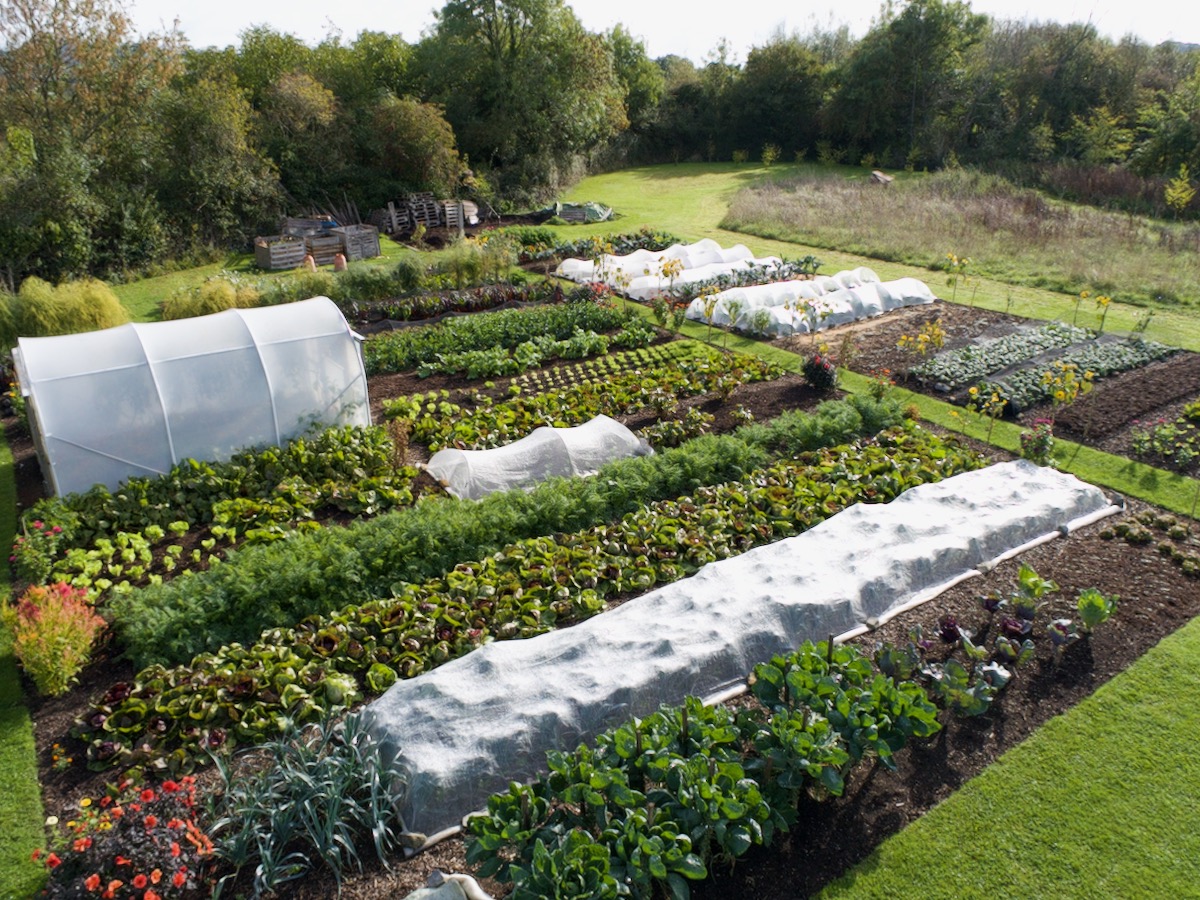March 2024 Exciting possibilities
Heading


Jobs for March
It's an exciting month ahead for vegetable growing. See this video pub 29th February, for ideas.
Background to all the possibilities for sowing and later transplanting, is to keep the garden tidy by occasional weeding and have minimal slug habitat. See my web page advice about slugs. If you give them any chance, you can lose so much! After a very wet autumn and winter, slug and snail numbers are high in the UK.
You can still prepare new no dig beds with cardboard on weeds then compost on top, or plastic on compost. See my previous blog.
Harvests are increasing such as overwintered spinach outside. We also are picking claytonia, lambs lettuce, spring onions, spring greens, leeks, carrots and land cress, all outside with no covers except for the cabbage, against pigeons.

Sowing now - see timeline also
It's still too cold for new sowings to germinate outside. Even under cover, which means in a greenhouse or polytunnel or cold frame, nights are on average too cold for most seeds to germinate. So either you need to germinate sowings in your house, or under cover with some warmth such as from a heat mat, or in my case from a hotbed of fresh manure, see photo below.
Under cover, sow any of broad beans, peas (for shoots initially, for pods soon)), spinach, lettuce, onions, salad onions, cabbage, calabrese, kohlrabi, cauliflower, turnips, beetroot, radish and Florence fennel.

Also sow globe artichoke, parsley, coriander and dill.
Plus celery and beetroot, if not already sown.
Leeks, not yet unless you want summer leeks.
Chard, best to wait because early sowings can bolt by early summer.
You can sow all of the above later, except for these four vegetables that flower in early summer - spinach, turnips, Florence fennel and kohlrabi.. Sow these four asap in order to have more harvest, before they rise to flower in June.
You can resow them from midsummer, to crop in autumn.
Spinach is true spinach, not the biennial leaf beet. I sow that in April, together with chard.
- Sow and grow all year - my Calendar and No Dig book offer covers all the bases

Potting compost, trays, warmth
The success of radish in wood chip is food for thought!!

This video has advice on early propagation. What composts and trays to use, how to keep them warm.

There could be woodchip bedding but I prefer not to have that because it takes so long to turn into compost. We use the contents of this hotbed as compost by the following spring.
There's a pallet frame under those trays, and the temperature under it is close to 40°C/104°F. I value this warmth for helping germination and the seedlings when still small, Then I move them off and put new ones on. The hotbed is not a space heater and it sometimes freezes inside the greenhouse.

Under the fleece covers above are speculative early plantings of radish, and peas for shoots. Most of my new seedlings are still in the greenhouse, just germinating, see below. Homeacres looked like this in my video tour of mid February.
No dig helps drainage

When ready to transplant
Planning where to place your transplants, and how to space them, is a feature of the Fryd app I am working with. I have been giving feedback to the developers for a few months and because there's a huge amount of information on there, it's proving a tricky to get some of my advice about succession planting in there. Mostly however it's a big potential help and you can sign up for free just to see what you think.
I posted this video about it and the bed below, on Instagram.

I transplant most seedlings from my module trays at about four weeks old, but sometimes less, straight into dibbed holes. There are very few vegetables that I pot on. Check out my long-handled dibber for making it easy to dib holes.

A different kind of propagation
Tomato Rosada is a hybrid variety, so any seeds saved will not grow true. The tomatoes are cherry plum and have a particularly fine flavour.
However, for some reason the variety is not available anymore, since 2013 in fact. I have been keeping it going by pinching sideshoots every October, to root in pots of compost. Then we transplant them the following spring. The photo shows where we are this winter with those cuttings taken over four months ago.

A cheerful prospect
In this climate, rhubarb grows almost like a weed, except in occasional dry weather. Which last happened eight months ago!
Rhubarb loves mild temperatures and rainfall, and the photo below was 20th of February!

Storing
We also have stored vegetables for another four to six weeks, longer for onions. The ones you see in the photo below have all spent the winter in an uninsulated shed. Occasionally they have frozen lightly, while much of the time they have been at ambient temperatures around 10°C 50°F.

Get Charles's advice in his free newsletter
& 10% off your first order in our shop




